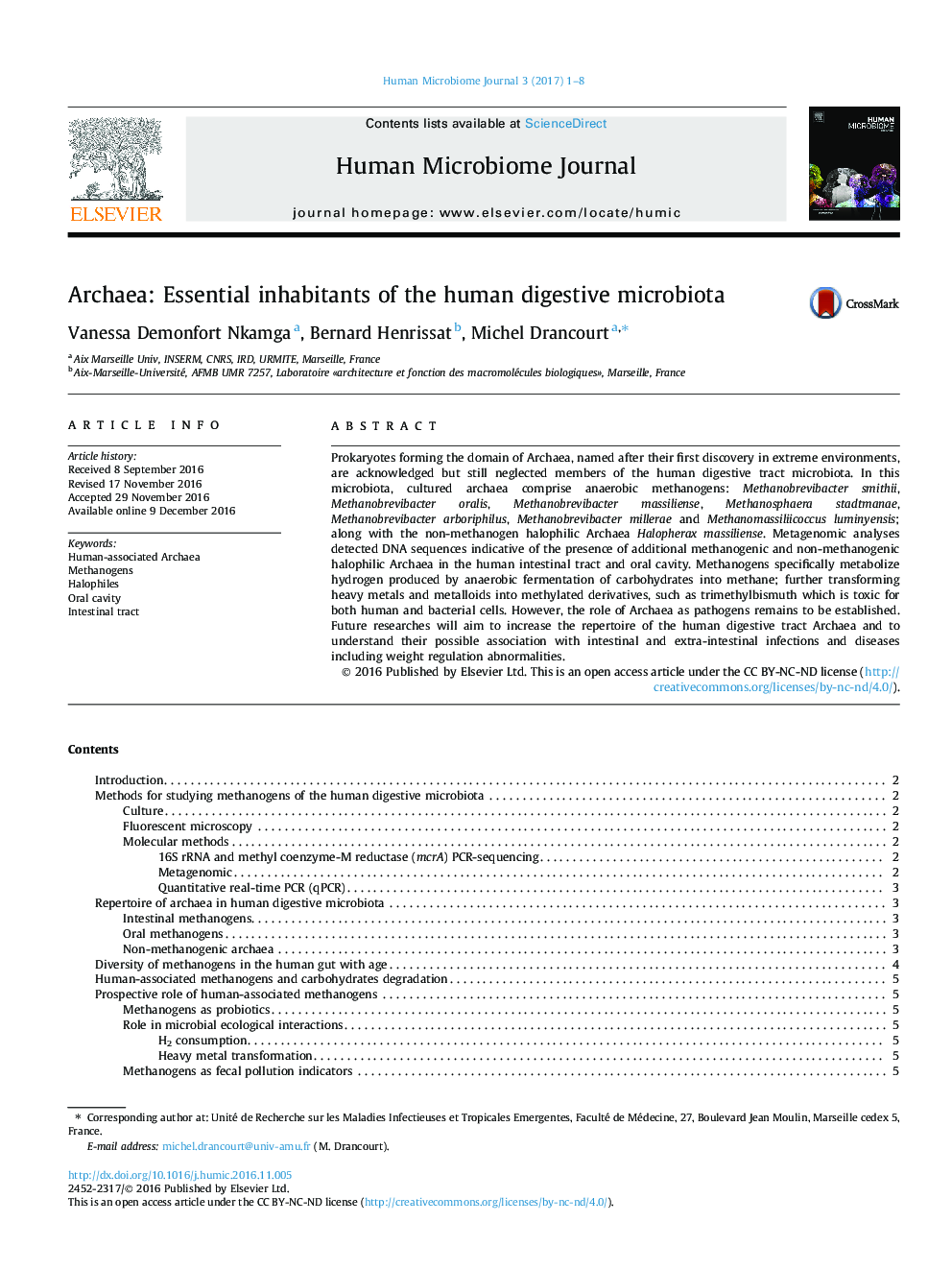| Article ID | Journal | Published Year | Pages | File Type |
|---|---|---|---|---|
| 5672162 | Human Microbiome Journal | 2017 | 8 Pages |
Abstract
Prokaryotes forming the domain of Archaea, named after their first discovery in extreme environments, are acknowledged but still neglected members of the human digestive tract microbiota. In this microbiota, cultured archaea comprise anaerobic methanogens: Methanobrevibacter smithii, Methanobrevibacter oralis, Methanobrevibacter massiliense, Methanosphaera stadtmanae, Methanobrevibacter arboriphilus, Methanobrevibacter millerae and Methanomassiliicoccus luminyensis; along with the non-methanogen halophilic Archaea Halopherax massiliense. Metagenomic analyses detected DNA sequences indicative of the presence of additional methanogenic and non-methanogenic halophilic Archaea in the human intestinal tract and oral cavity. Methanogens specifically metabolize hydrogen produced by anaerobic fermentation of carbohydrates into methane; further transforming heavy metals and metalloids into methylated derivatives, such as trimethylbismuth which is toxic for both human and bacterial cells. However, the role of Archaea as pathogens remains to be established. Future researches will aim to increase the repertoire of the human digestive tract Archaea and to understand their possible association with intestinal and extra-intestinal infections and diseases including weight regulation abnormalities.
Related Topics
Life Sciences
Immunology and Microbiology
Microbiology
Authors
Vanessa Demonfort Nkamga, Bernard Henrissat, Michel Drancourt,
